For as long as artists have been making movies, terrifying monsters and creepy creatures have been brought to life and featured in numerous Science Fiction and Horror films. In many cases, the imagination of the directors far outpaced the limited special effects capabilities available and the result was a string of cheesy, low budget films that, despite their almost laughable monsters, remain near and dear to the hearts of Sci-Fi aficionados. In other cases, special effects and good film making have produced some of the most chilling moments in film history.
Words & Photos by Michael Salvarezza & Christopher P. Weaver
We thought it would be fun to take a stroll down memory lane by reimagining the fictional monsters in the titles of these films with images of creatures that actually do exist in real life: the creatures we find under the sea. For those who have seen the movies referenced in this article, we think you will enjoy reminiscing about these movies, and the creatures they featured, through the use of our photography. For those who have never seen these movies, perhaps you will be inspired to check them out on your favorite streaming services.
Movie monsters are not a recent phenomenon. In 1922, the German made vampire movie titled “Nosferatu: A Symphony of Horror” was released starring Max Schreck in the role of Count Orlok, a character based on Bram Stoker’s Dracula. The silent movie has come to be regarded as an influential masterpiece of early movie making and the spooky images of Schreck in the title role are still terrifying over a century later.
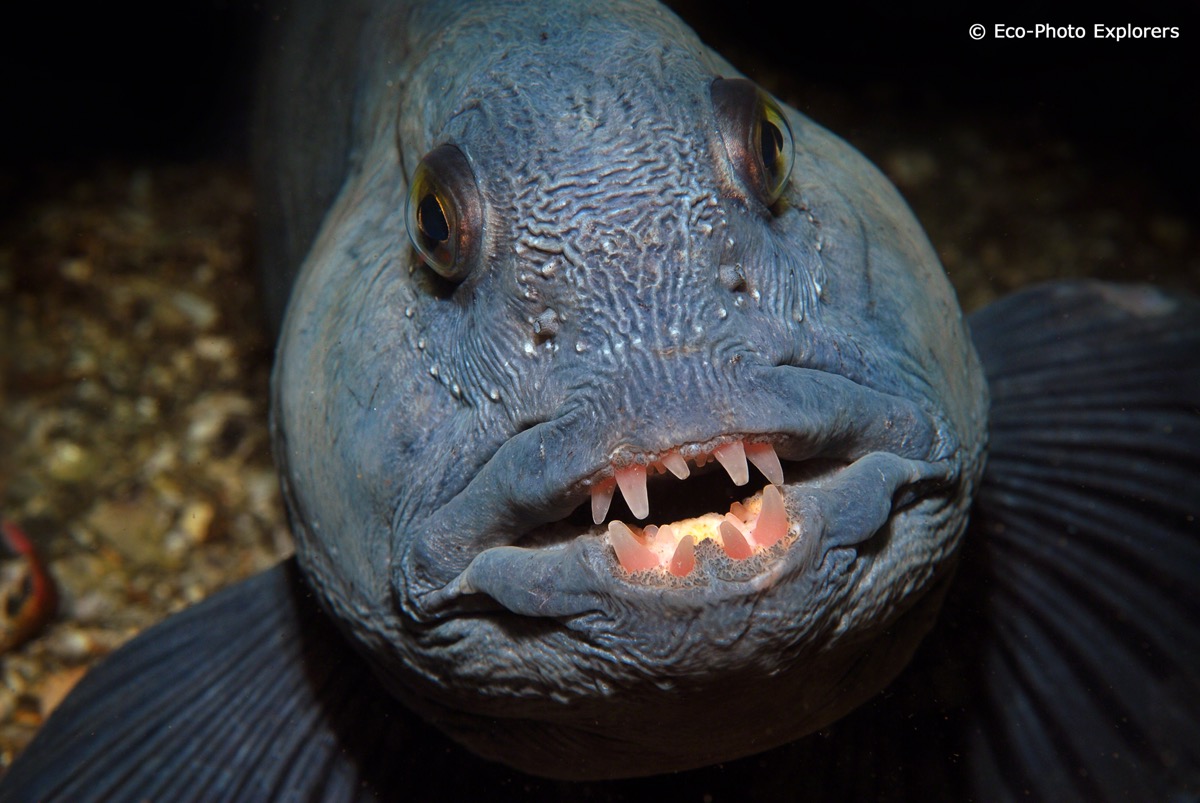
This Wolf Fish from Iceland resembles Nosferatu
We think this image of a Wolf Fish taken in the northern fjords of Iceland at the base of the Strytan hydrothermal site is a close approximation to Schreck’s hideous Count Orlock. Both have a fearsome looking face with menacingly protruding teeth but there is one difference: The Wolf Fish is, in fact, quite harmless!
A time-honored tradition for Sci-Fi and Horror movies is to create hyperbolic titles to attract viewers. Often, the creature eventually featured would fail to live up to the movie’s over the top description. “The Monster that Challenged the World” from 1957 is a good example – in this black and white film a handful of giant mollusks emerge from the Salton Sea in California and must be stopped.
The title of this film made us think of this image of a Damselfish, captured on the reefs off Curacao in the Caribbean. Divers who have encountered these diminutive fish know that they do not back down even when faced with the threat posed by a six-foot diver blowing noisy bubbles from his or her imposing SCUBA equipment. Get too close and the 3-inch Damselfish will actually attack and bite! A great example of a reef “monster” that challenges the world!
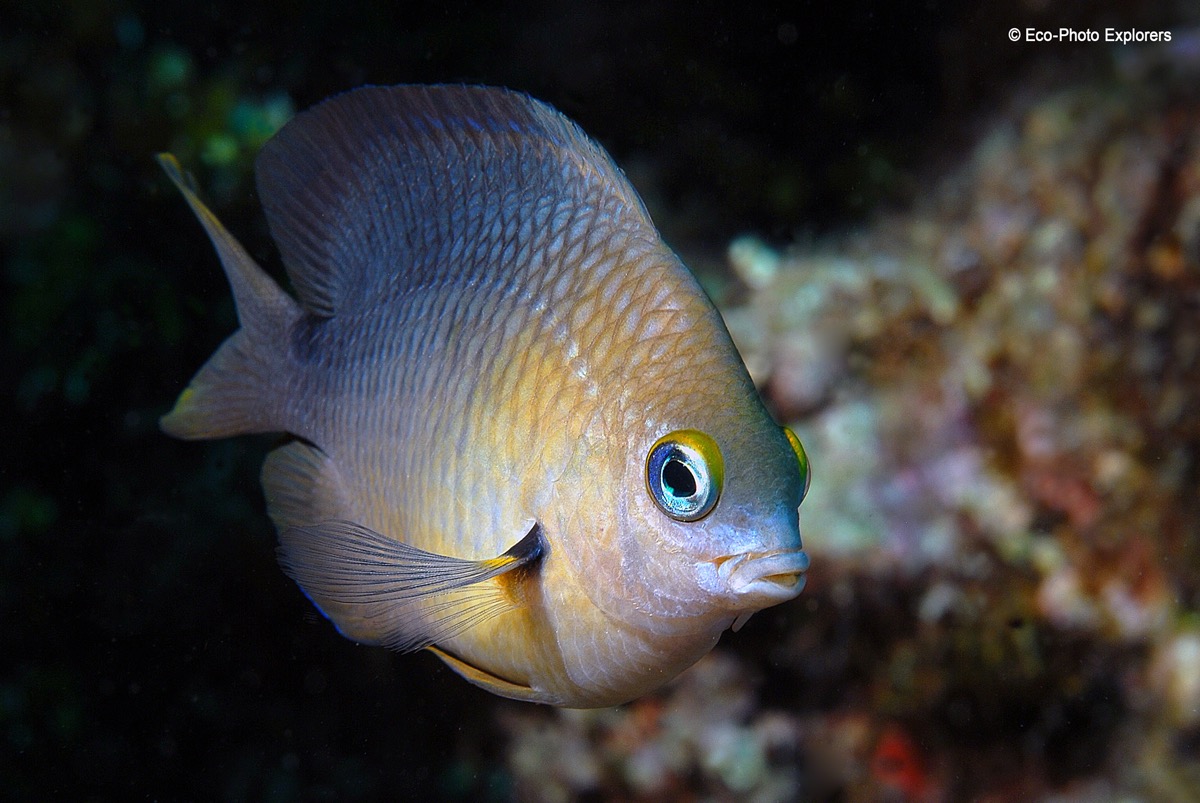
The Monster that Challenged the World is a 3-inch Damselfish
In 1961, William Castle produced “Mr. Sardonicus”, a horror movie about a man whose face becomes frozen in a horrifying grin while robbing his father’s grave to obtain a winning lottery ticket. The terrifying grin on actor Guy Rolfe’s face resembles the toothy grin of this Lizardfish, a common denizen of tropical reefs, which was found on a muck dive in Lembeh, Indonesia.
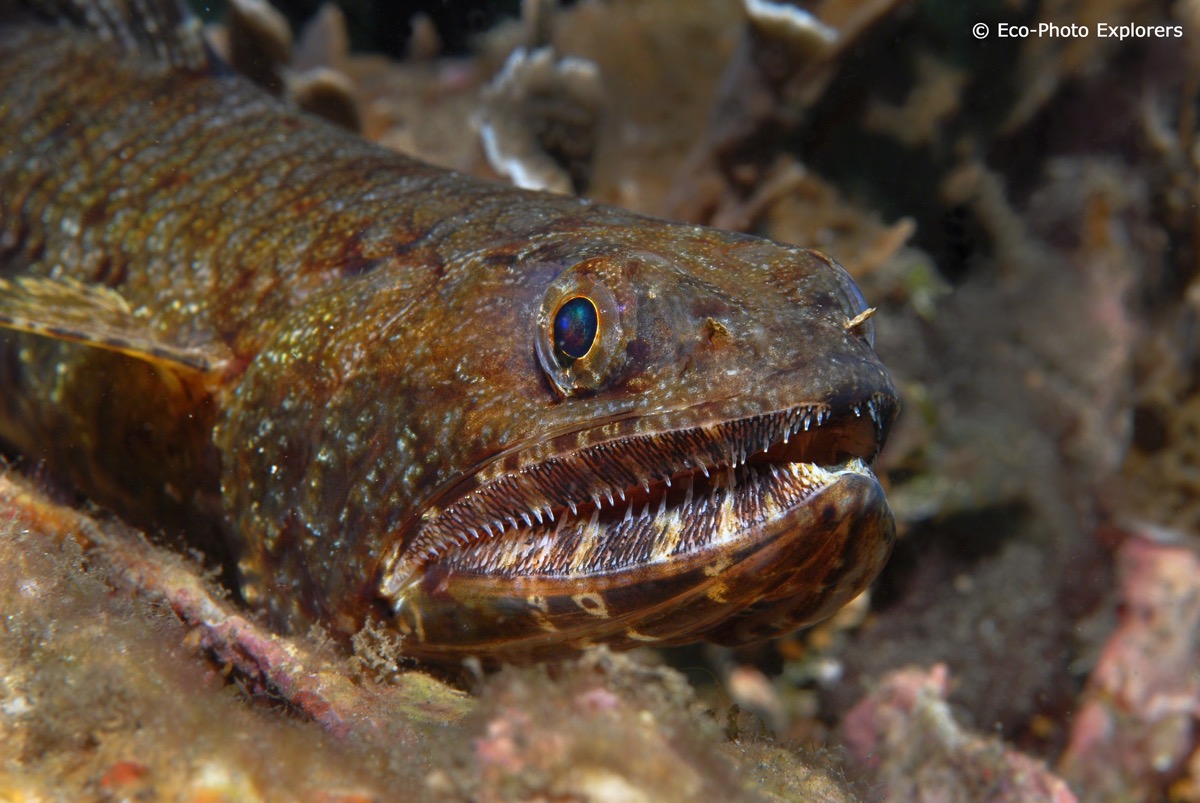
Is this Mr. Sardonicus?
Sometimes the trick to a successful monster movie is to take a completely preposterous idea and make it plausible. “The Crawling Eye” certainly meets both of those criteria! Made in England in 1958 and released there under the name “The Trollenberg Terror” it concerns a mysterious radioactive cloud that appears in the Swiss Alps hiding hideous tentacled creatures that resemble giant eyeballs.
While diving the rocky reefs of Malta in the Mediterranean, we came across this secretive Octopus…and immediately thought of The Crawling Eye!
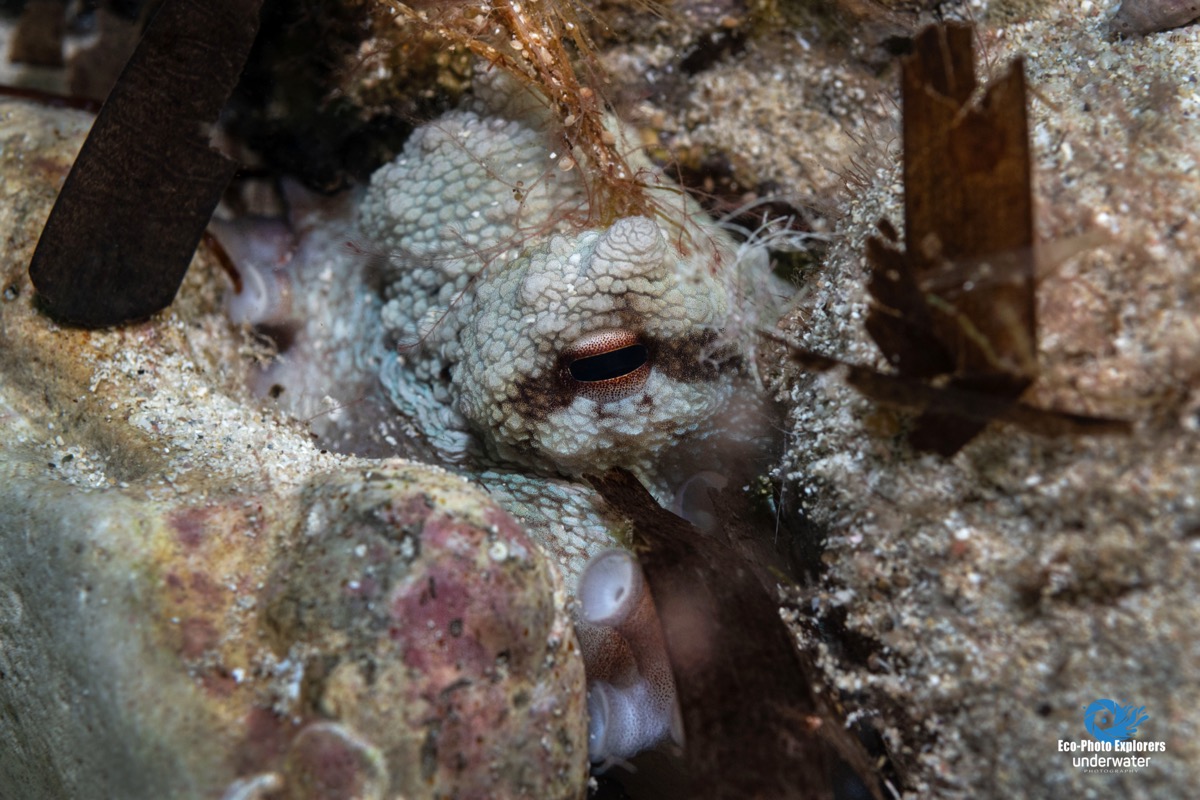
This Octopus from Malta might remind you of The Crawling Eye
One of the most popular Sci-Fi classics from the 1950s is “The Blob”. Made in 1958 and starring Steve McQueen in one of his earliest roles, the movie tells the story of a carnivorous amoeba-like alien that crashes to Earth from outer space. Steve McQueen and his teenage friends have trouble convincing the authorities of the danger until it begins to grow larger and more aggressive, eventually becoming as large as a house.
The image of the Bubble Anemone was taken on a reef in Tubbataha in the Philippine’s Sulu Sea. Although not malevolent like The Blob, it does bear a striking resemblance to the alien creature of that 1950’s classic Sci-Fi feature.
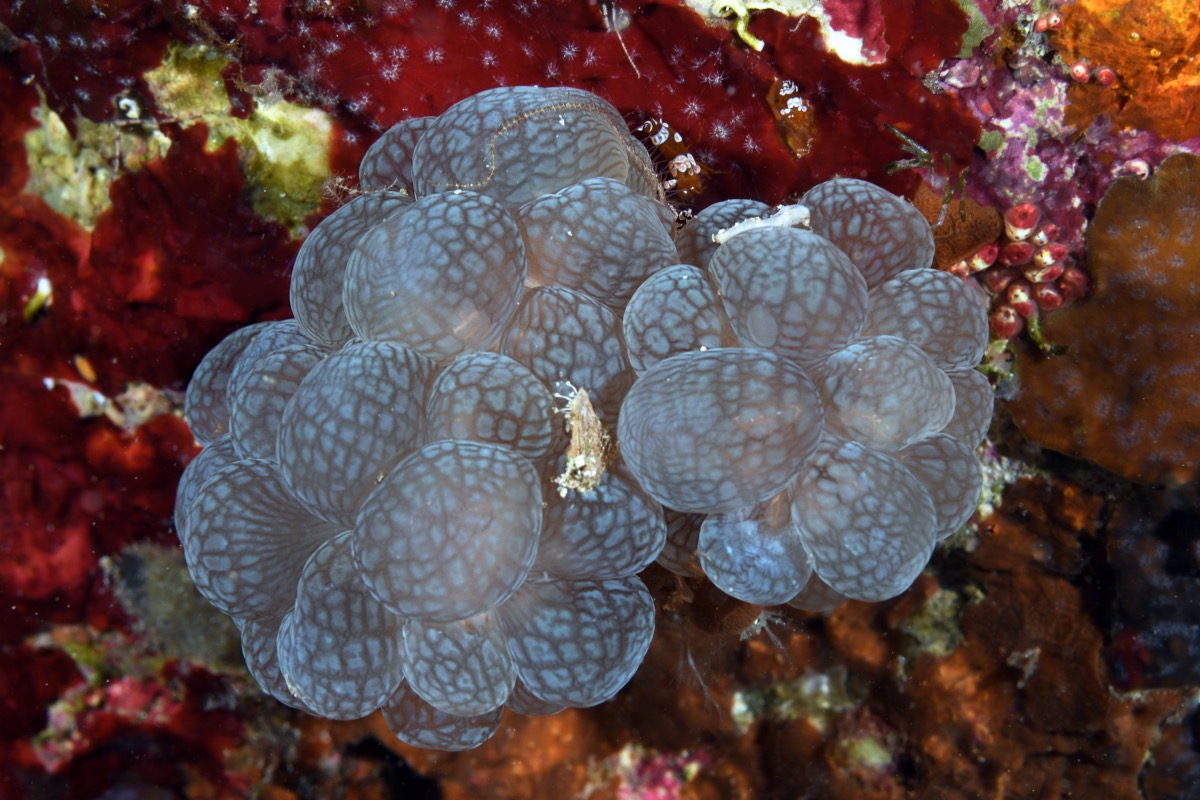
The Bubble Anemone is a reef dwelling version of The Blob
Divers travel from all over the world to visit the Mecca of muck diving: Lembeh Straight in North Sulawesi, Indonesia. Here, in a relatively small area of featureless bottom strewn with garbage lies an underwater photographer’s playground filled with weird and wonderful creatures. Strange fish, beguiling nudibranchs, charismatic crabs and mesmerizing shrimp are just some of the alien-looking creatures to be found in these waters. On one late afternoon dive here, we swam over the intimidating face of a Stargazer, his body buried in the silt but his glowering face pointed upwards, a monster lying in wait for his next meal. What to name this creature? It seems that the only appropriate moniker would be John Carpenter’s 1982 movie called “The Thing,” staring Kurt Russell about a shape-shifting alien creature terrorizing a group of scientists in Antarctica.

We call the Stargazer lying in wait for its prey The Thing
Speaking of Antarctica, we travel there for our next suspenseful inspiration. In 1963, Director Alfred Hitchcock released his classic “The Birds”, a thriller about a sudden series of unexplained attacks by birds in a small seaside town in California. In the climactic scene of the movie, actor Rod Taylor carefully takes Tippi Hedron and his family out of their besieged house and drives off into the California countryside while millions of birds stand menacingly on guard for as far as the eye can see, many of them seeming to exult in their victory over the humans.
We were reminded of this scene when we came upon a pair of Skuas rejoicing over their kill of a baby Chinstrap Penguin on Deception Island, a dormant volcano in Antarctica. Skuas are large fierce predators with an average wingspan of 55 inches and a length of 23 inches. Imagine if the Skuas turned against humans!
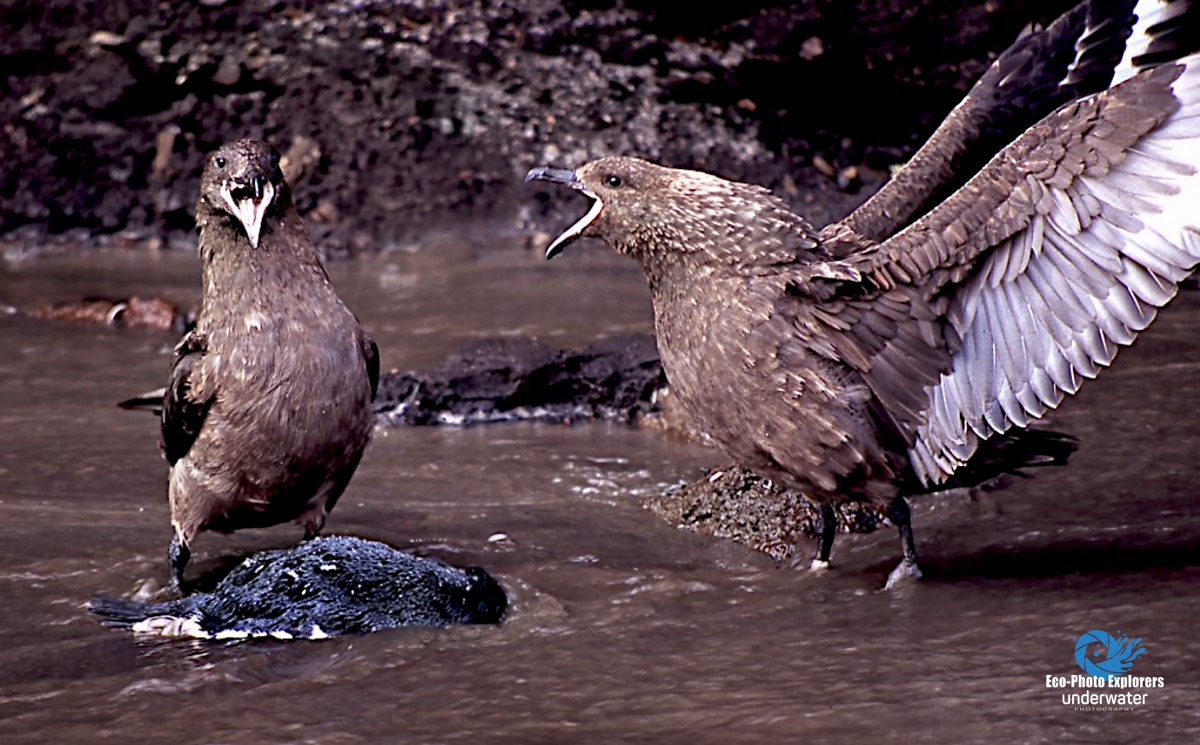
Skuas on Deception Island is reminiscent of the final scene in The Birds
As times have changed, some Sci-Fi projects have become less serious and campier in nature. “Killer Klowns from Outer Space” was made in 1988 and is a horror movie regarded by some as being so ridiculous that it’s difficult to dislike it. What better underwater creature to match to this eye-catching movie title than the iconic Clownfish, a species of Anemonefish, photographed here in the Philippines?
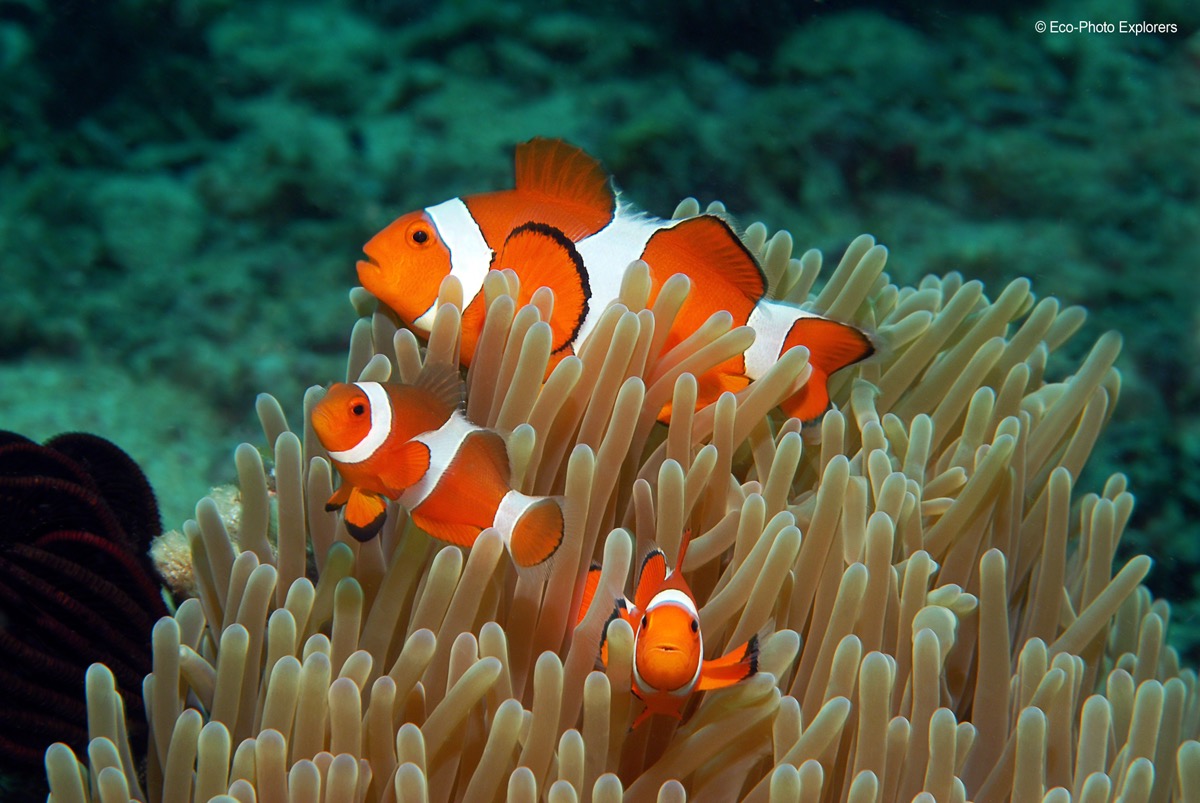
The Killer Klowns from Outer Space have nothing on these beautiful Clownfish
There are 30 species of Anemonefish found in the world’s tropical oceans. All of them are strikingly beautiful and their symbiotic relationships with their host anemones are fascinating. While the protections afforded by living in the midst of the stinging tentacles of the anemone are great, there are other insidious threats to Anemonefish that they sometimes cannot avoid. In this image of an Anemonefish from Mindoro Island in the Philippines, a tongue eating louse can be seen lodging comfortably in the mouth of the unsuspecting fish. The parasite will detach the fish’s tongue and then absorb as much blood and nutrients as it needs, while the host fish tends to actually live fairly well despite the unwanted lodger in its mouth.

This Anemonefish is having its body snatched by a tongue eating louse.
The tongue eating louse brings to mind the terrifying classic Sci-Fi movie “Invasion of the Body Snatchers” from 1956, a movie designed to tap into the communist paranoia of invaders hiding amongst us the late 1950s.
In the “Beast with a Million Eyes” from 1955, the plot involves a space alien that is able to see through the eyes of a large array of Earth life that it can also mentally control, part of its plan to conquer the Earth.
While it doesn’t have a million eyes, the Peconic Bay Scallop photographed on Long Island in New York does have many beautiful blue eyes but we are quite certain that it is not using mind control to take over the world!
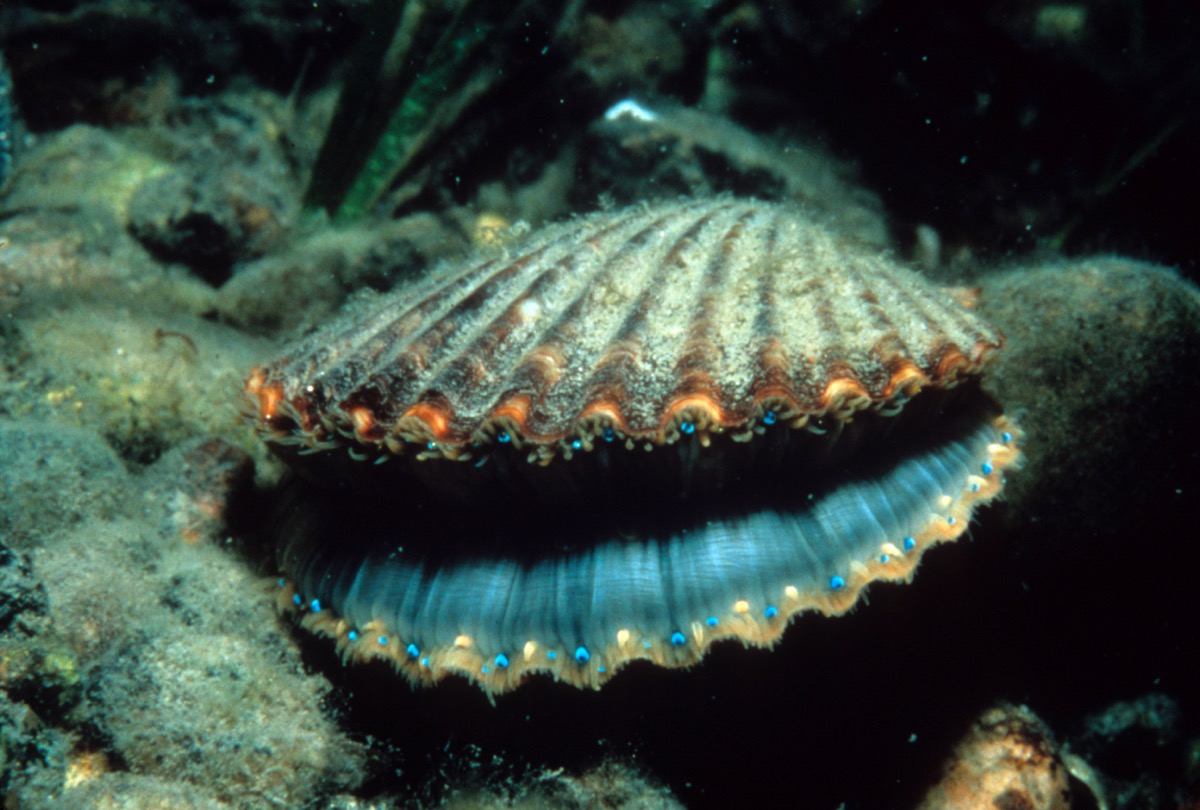
The Beast with a Million Eyes is this beautiful Peconic Bay Scallop
In 1959, “The Tingler” was released, an American horror film starring Vincent Price that tells the story of a scientist who discovers a parasite in human beings that feeds on fear. The creature makes the host’s spine “tingle” when the host is frightened. As a gimmick, the producers arranged for movie houses to enable the seats to slightly buzz at various points of the movie!
The Electric Fileclam is our version of the Tingler. Photographed in the Maldive Islands, the Fileclam only looks as if it is generating an electrical spark as divers see a flashing white pattern coming from the animal’s mantle. In fact, it is only an optical illusion created by the mollusk moving its flesh up and down to temporarily reveal a white lightning bolt-like pattern.
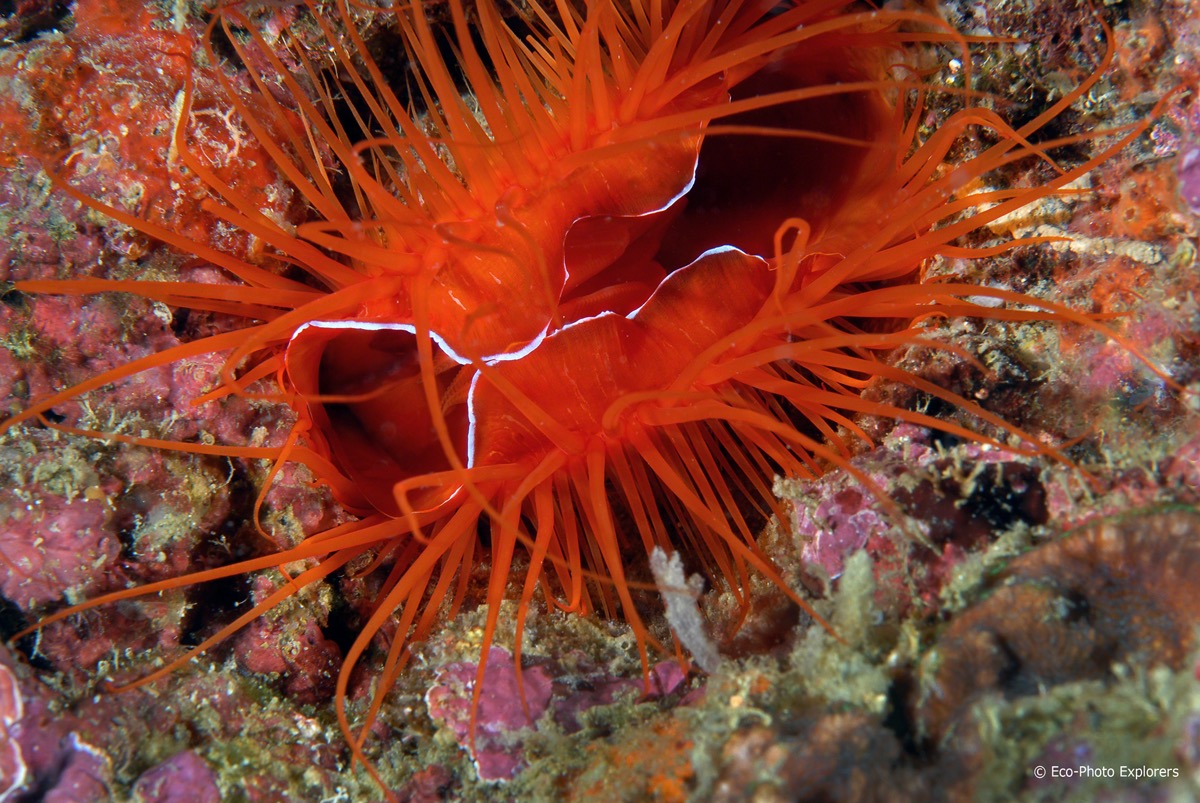
The flash of the Electric Fileclam brings to mind The Tingler
George A. Romero released “Night of the Living Dead” in 1968, a story of reanimated corpses that did not know they were dead and were in search of human flesh to eat. The movie gave life to the zombie genre of horror films and is a cult classic.
In Alaska’s Valdez Bay, we plunged into frigid freshwater streams to photograph Salmon as they furiously made their way inland to mate and die. The Salmon do not eat during this journey, their bodies wasting away as they expend every last ounce of energy to meet their destiny. In many ways, these Salmon are the aquatic world equivalent of the Living Dead.
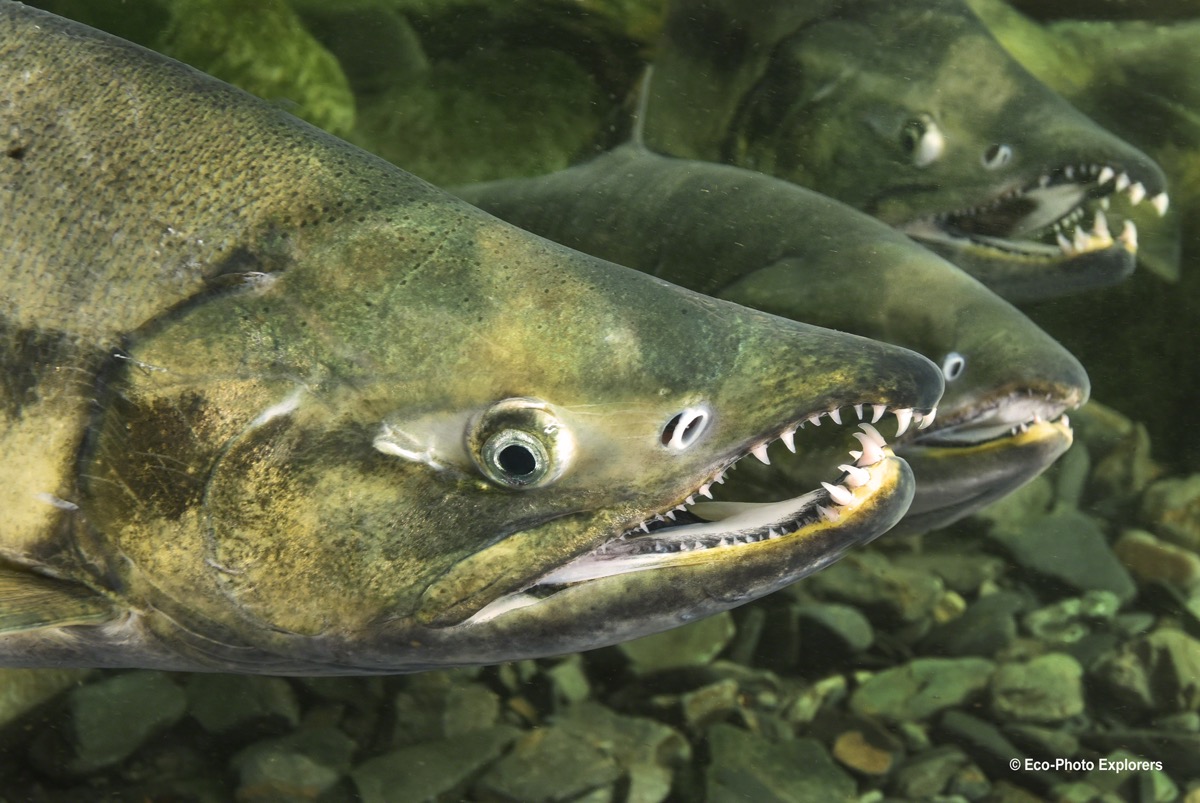
As these Salmon make their way upstream in Alaska to their demise, they can be compared to The Night of the Living Dead
There are examples everywhere we look under the water of creatures that evoke the monsters of our favorite Sci-Fi and Horror movies. The Mantis Shrimp from Indonesia brings to mind “The Deadly Mantis” from 1957 about an enormous killer mantis. On a black water dive off the big island of Hawaii, we photographed alien looking planktonic creatures that resembled spaceships and UFOs, portrayed brilliantly in “Close Encounters of the Third Kind” by Steven Spielberg in 1977. The fearsome head of a snake eel, protruding from the Lembeh substrate in Indonesia, hints at the danger below and reminds us of the movie “Slither” from 2006.

This Mantis Shrimp is hardly as ferocious as The Deadly Mantis

Is this a spaceship from Close Encounters of the Third Kind?
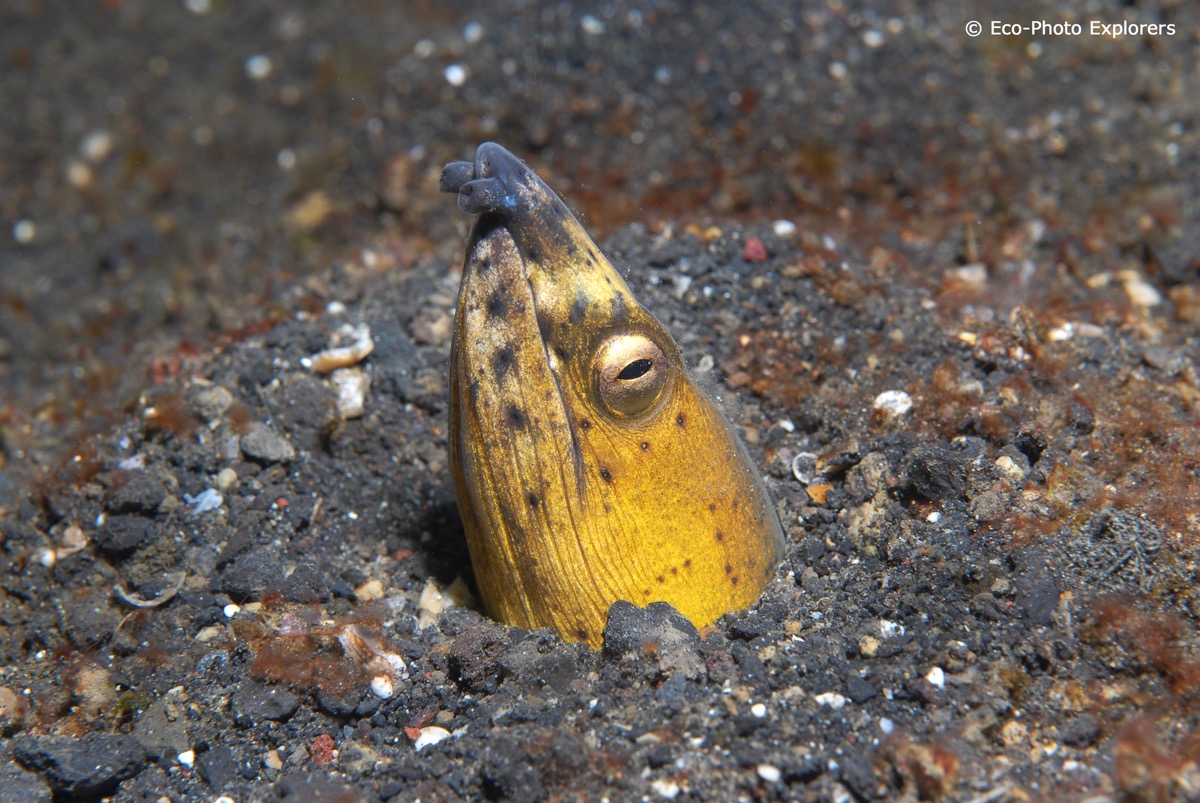
The head of a Snake Eel could have inspired the movie title Slither
And, finally, we travel to the Galapagos Islands where a real-life Godzilla can be found both on land and in the water. The Iguanas of the Galapagos clearly resemble the movie monster introduced to the world in 1954 in the Japanese made movie “Godzilla”. Since then, the giant sea creature fueled by nuclear radiation has appeared in 38 movies with more on the way.
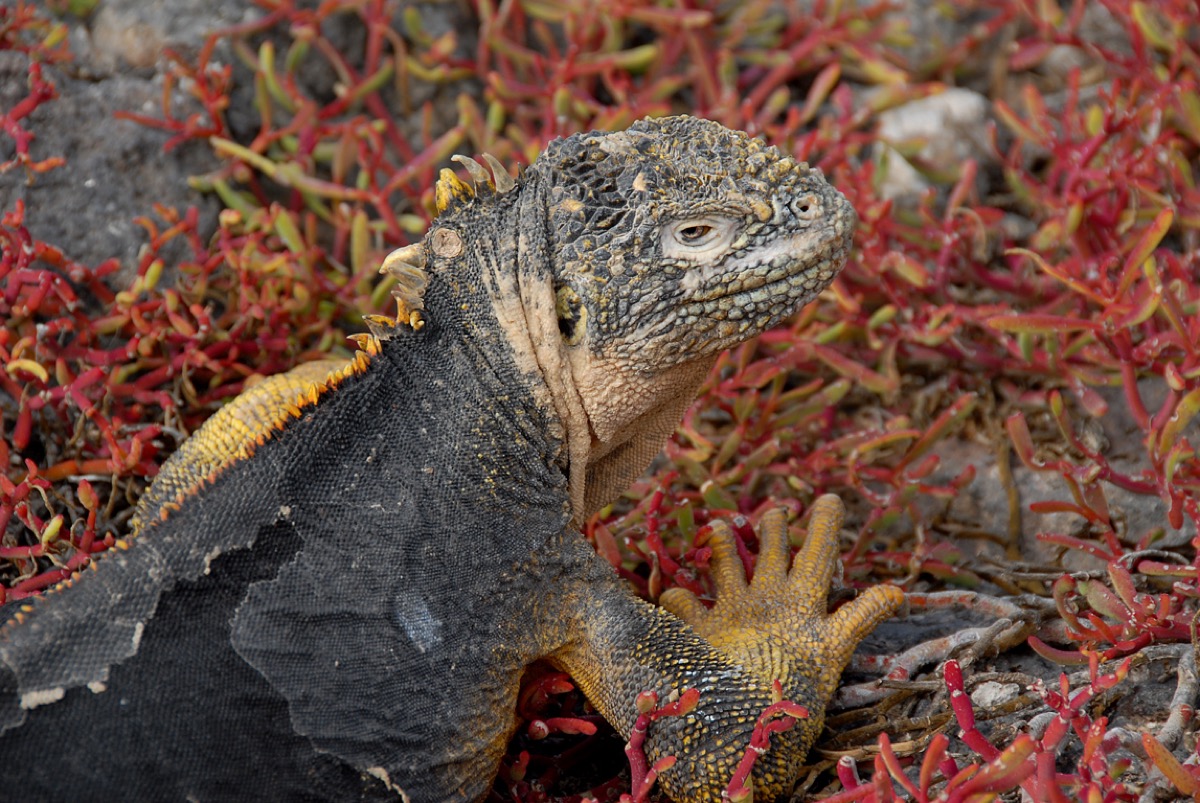
Has Godzilla come to life in the Galapagos Islands?
Even though Godzilla consistently threatens humanity by levelling cities and wreaking destruction wherever he goes, the Galapagos Iguanas are harmless. Indeed, unlike the movie monsters we explored in this article, all of our Sci-Fi and Horror inspired creatures are harmless and bear no ill will towards humans…we think!
Words & Photos by Michael Salvarezza & Christopher P. Weaver
